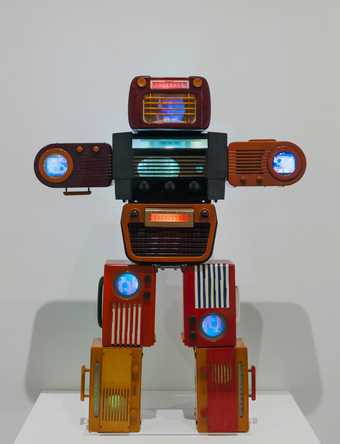Inspired by the work of Nam June Paik, this four-week course examines the dynamic relationship between art and technology in the twentieth and twenty-first centuries. How have artists used different forms of media to shape ideas of the future?
Led by lecturer Zara Dinnen, the course will discuss the utopian possibilities imagined by artists, as well as visions of technological failure, collapse and banality.
Drawing on after-hours visits to the Nam June Paik exhibition and the Collection Displays at Tate Modern, participants will discuss how art and technology make new worlds and give us a vital language to understand old ones.
Course Structure
Week 1: We are Data
The course begins with a visit to the Media Networks Display to assess Barbara Kruger’s work. We’ll consider what is perhaps the most pressing question concerning art and technology today: who are our data-selves and what worlds do they live in?
Week 2: We are Users
This week we will spend time with works by Nam June Paik which invite viewer participation. What kinds of agency does technology afford its users? The group will be joined by Valentina Raveligna, Curator, Displays and International Art, Tate Modern.
Week 3: Fugitive Histories
In this session we will visit works by Ellen Gallagher, and discuss the films of The Otolith Group, to consider how artists have radically intervened in histories of technology. Gallagher’s work exemplifies key concerns of Afrofuturism, which will be our main case study.
Week 4: Technological Affects
In the final week we will return to the Nam June Paik exhibition to look at evocative and contemplative works that invite us to think about the encounters new technologies create.
Course Tutor
Dr Zara Dinnen is Lecturer in Twentieth and Twenty-First Century Literature at Queen Mary University of London and author of The Digital Banal (Columbia University Press, 2018). @zara_dinnen.

